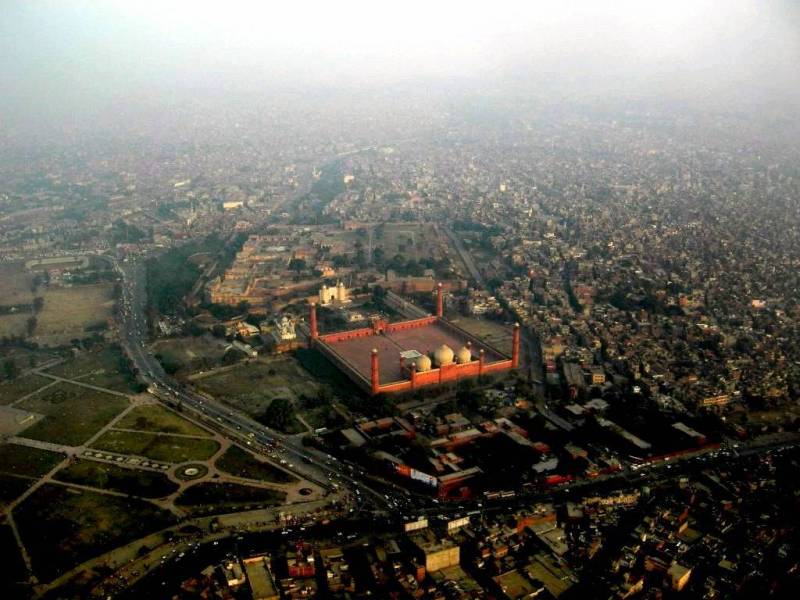Every day the Lahori loses a piece of their soul as Lahore, in all its former glory, is wilting away right before our eyes. Like sand from the seashore, we try to hold on, but it powders like pixie dust and disintegrates into an ‘urban’ abyss.
What is Lahore, I implore? The city of gardens, in the province of plains? The seat of artists, thinkers, poets and believers? The harbourer of Mughal history and our colonial origins? Or a rich mesh of ethnicities and dynamism? Are we really to replicate what other cities are? A blurred definition of economic rationalism and prosperity? Of more bridges, metro trains and highways? Dubai, Singapore or Beijing?
A renowned urban theorist, Jane Jacobs, brings to light so eloquently the shortcomings of modern urban planning. She describes three hierarchal segmentations of the way people are housed, that affects our social structures and communal living spaces, middle income housing projects that ‘marvel on dullness and regimentation’; such as Askari 10 and 11. Low income projects that become greater centres of delinquency and social disorder. Lastly, big luxury housing schemes that lack substance, but are consistently masking this inanity with perverted vulgarity; such as Bahria Town. These are called “price tags” on the population; each that surrounds the other with suspicion and tension. Constant alienation that festers on an ‘us versus them’ paradigm. We are surrounded by lacklustre cultural centres that can barely hold a worthy bookstore or library and commercial centres that feed on mechanic and habitual shopping. Civic centres are avoided like the plague by everyone except “bums”. Paved public walkways go nowhere nor serve anyone and highways gut the city, completely withdrawing a place from its former buoyancy and vitality. No longer is there a sense of shared space or communal living such as that once existed in the Walled City; wholesome and organic.
The DHAs continue expanding and liquidating land, to construct heinous households that litter, where there were once open fields, with drab, straight lines - lacking originality and sustainable insight. Have we truly forgotten our architectural roots? Did the Mughals not engineer their buildings to suit the subcontinent climate, or master the physics of effective building? We have felled all the architecturally-rich pre-colonial and colonial houses in central Lahore only to create space for poorly engineered malls such as Galleria, to feed an elitist, consumerist culture that is growing repulsively, nauseatingly, everyday. Billboards and adverts plastered everywhere are testament to this way of life. Noxious high rise buildings sprout suddenly through efforts to ‘whiten’ black money, yet dust bunnies are prancing around in those deserted halls. Not to mention the gaudy ‘Shadi houses’ that are at every turn. Yet, the Sheesh Mahal is crumbling in its foundations, no thanks to the exorbitant amount of traffic and pollution that rumbles by its gates. Thank you for your poorly designed expressways and ‘signal free corridors’!
After all, it matters not the alienation of your poor by consistent gentrification. The farmers who lost their land in place for DHA housing schemes; the individuals displaced and provided no recompense for the exorbitant Orange Line. What about the impoverished who cannot use their bicycles on these roads? What of the over-crowding in slums? What of all the soil lost that balances your ecology when you build in its stead more concrete? Have we completely failed our people, by providing only for the wealthy?
Urban growth cannot be denied, of course, and the ‘S’ curve describes this growth model. The latter half of the curve depicts the growth curve for the developing world – an upward trend. The upper half is the industrialised world, where development slows down, eventually peaks and thus plateaus out - urbanisation is finite. Yet, this growth does not seem to be slowing in Lahore, Islamabad or Karachi. A U.N study indicated that 60% of the world’s population will move to urban cities in the next decade. If this is true, these three cities have a major problem heading their way.
Yet, in a world where we have endless opportunities, possibilities and resources, our authorities only see the west as a design model. They want to grow like Shanghai – on steroids. There is no lack of artists and architects; those who truly see the city for what it is. Did Rome forget Romulus? Did London and Paris replicate America with high rise buildings?
One of the greatest urban parks is the 843-acre Central Park in New York City. It was built when a hundred architects pitched development plans for the area and Fredrick Law Olmsted’s ‘Greensward’ plan was picked for its social, cultural and architectural innovation. Why then, can we not make use of our architects, historians, designers and urban planners in a similar way? Do we, the laymen Lahoris, not nurture greater insight into what might better suit our needs?
After all, “Cities have the capability of providing something for everybody, only because, and only when, they are created by everybody.”






